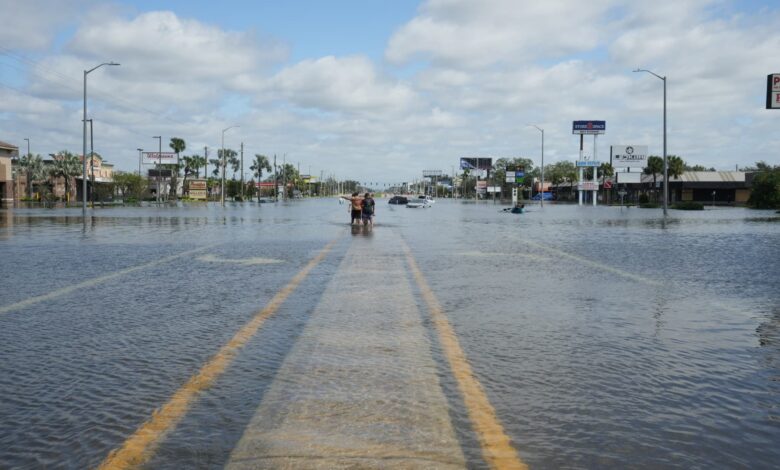As Florida reels, focus turns to restoring power, assisting victims after Hurricane Milton

Water begins to recede from flooded streets in Tampa, Florida due to Hurricane Milton on October 10, 2024.
Bryan R. Smith | AFP | Getty Images
Restoring power, cleaning up debris and distributing fuel are top priorities in Florida as the state continues to struggle. Storm Milton. More than 1.5 million people were without power and at least 17 deaths were confirmed as recovery efforts continued into the weekend.
Florida Gov. Ron DeSantis said Saturday that efforts are still underway to assist people and provide resources to hard-hit areas across the state. Areas of western and central Florida continue to face a significant risk of flooding as creeks and rivers continue to rise.
DeSantis said the state is working to address fuel needs in hard-hit areas. He said free fuel distribution depots have opened in Plant City, Bradenton and St. Petersburg, and officials are in the process of opening more in Hillsborough County and Pinellas County.
All major highways and bridges in the Tampa Bay area have reopened. Airports across southwest Florida have also returned to normal operations, except for Sarasota Bradenton International Airport, which DeSantis said is expected to reopen Wednesday.
Although the Tampa Bay area was not affected by forecasters’ worst-case scenario of storm surge as high as 15 feet, DeSantis said, strong winds caused significant damage and heavy rains caused causing serious flooding in urban and inland areas.
“Tampa Bay didn’t have the high water that people feared, but what you end up seeing is just a huge amount of water – on the north side of the storm – a huge amount of water,” he said. “Of course there was wind and that created a situation inland where you had a lot of flooding and the water continued to rise even after the storm left.”
Emergency responders in St. Petersburg, Fla., on Friday.Tristan Wheelock/Bloomberg – Getty Images
Flooding is still possible in many parts of the state as river levels are expected to continue to rise next week.
Severe storms like Milton can dump huge amounts of rain on land, causing rivers, lakes and creeks to swell for days – and sometimes weeks – after the storm makes landfall.
Milton’s rainfall total in the Tampa Bay area reached 18.31 inches in St. Petersburg, 14.01 inches in Clearwater Beach, 11.43 inches in Tampa and 10.12 inches in Seminole.
Several waterways in the Tampa area, including the Anclote River, Hillsborough River, Withlacoochee River, Cypress Creek and Alafia River, have reached major flood period on Saturday, according to the National Oceanic and Atmospheric Administration.
NOAA has four categories to communicate risks to the public at any location from high water flows. During periods of “major” flooding, the agency predicts that “structures and roads will be flooded on a large scale,” which may require evacuating people and moving property to higher places.
The Alafia River peaked at 24.34 feet on Friday and although it has begun to recede, NOAA forecasts show it will remain in the major or moderate flood stage through early next week.
the Hillsborough River near Zephyrhills peaked at 17.14 feet early Friday morning, marking the highest flood level on record. Hillsborough County officials on Friday issued several flood warnings, saying rising water levels in some rivers were “creating dangerous conditions for residents.”
A person walks through a flooded street from the rising Anclote River in New Port Richey, Fla., on Friday. Spencer Platt/Getty Images
Officials in Pasco County said Friday on X that residential areas near rivers and lakes are experiencing “historic flooding” and urged people to immediately leave and find higher ground.
The water level is is expected to continue to increase in the coming dayscausing a major risk of flooding in low-lying areas of the county, officials said.
Areas in central Florida are also facing an increased risk of flooding due to water levels in the St. Johns River and the rising Ocklawaha River.




